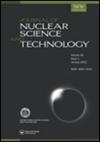液相闪烁光谱测定方法的应用
IF 1.7
4区 工程技术
Q2 NUCLEAR SCIENCE & TECHNOLOGY
引用次数: 0
摘要
摘要以前我们报道了一种简单的光谱测定方法(SDM),该方法基于样品的γ射线光谱是样品中放射性核素的单个光谱的线性叠加的第一原理,并证明了该方法对γ射线的测定是有效的。本文将其应用于液体闪烁计数器(LSC)得到的光谱。在LSC测量中普遍观察到猝灭现象,我们首先提出了对标准光谱的校正方法。在前面的研究中报告的SDM代码被用来分析LSC频谱。通过对实测光谱的分析,我们得出结论,SDM方法在LSC光谱中是有效的,类似于之前研究的γ射线光谱。关键词:液体闪烁分解-计数器光谱-全谱分析-最小二乘拟合校正-测定精度免责声明作为对作者和研究人员的服务,我们提供此版本的接受稿件(AM)。在最终出版版本记录(VoR)之前,将对该手稿进行编辑、排版和审查。在制作和印前,可能会发现可能影响内容的错误,所有适用于期刊的法律免责声明也与这些版本有关。本研究由日本原子能机构核能科技与人力资源开发项目资助,项目资助号:JPJA20P20333366。本文章由计算机程序翻译,如有差异,请以英文原文为准。
Application of the spectral determination method to liquid scintillation spectra
ABSTRACTPreviously we reported a simple algorithmic method of spectral determination method (SDM), which is based on the first principle that a γ-ray spectrum obtained for a sample is a linear superposition of individual spectra of the radioactive nuclides included in the sample and demonstrated that the method is valid for γ-ray determination. Here we apply it to the spectra obtained by liquid scintillation counter (LSC). In LSC measurements quenching is generally observed and we at first developed its correction method to standard spectra. The SDM code reported in the previous investigation is used to analyze the LSC spectra. Based on the analyses done by using the measured spectra, we concluded that the SDM method is valid in the LSC spectra similarly to the γ-ray spectra studied in the previous investigation.KEYWORDS: Decomposition of a liquid-scintillation-counter spectrumfull-spectrum analysisleast-squares fitquenching correctiondetermination accuracyDisclaimerAs a service to authors and researchers we are providing this version of an accepted manuscript (AM). Copyediting, typesetting, and review of the resulting proofs will be undertaken on this manuscript before final publication of the Version of Record (VoR). During production and pre-press, errors may be discovered which could affect the content, and all legal disclaimers that apply to the journal relate to these versions also. AcknowledgementsThis work was supported by JAEA Nuclear Energy S&T and Human Resource Development Project through concentrating wisdom Grant Number JPJA20P20333366.
求助全文
通过发布文献求助,成功后即可免费获取论文全文。
去求助
来源期刊

Journal of Nuclear Science and Technology
工程技术-核科学技术
CiteScore
2.40
自引率
16.70%
发文量
116
审稿时长
2.3 months
期刊介绍:
The Journal of Nuclear Science and Technology (JNST) publishes internationally peer-reviewed papers that contribute to the exchange of research, ideas and developments in the field of nuclear science and technology, to contribute peaceful and sustainable development of the World.
JNST ’s broad scope covers a wide range of topics within its subject category, including but are not limited to:
General Issues related to Nuclear Power Utilization: Philosophy and Ethics, Justice and Policy, International Relation, Economical and Sociological Aspects, Environmental Aspects, Education, Documentation and Database, Nuclear Non-Proliferation, Safeguard
Radiation, Accelerator and Beam Technologies: Nuclear Physics, Nuclear Reaction for Engineering, Nuclear Data Measurement and Evaluation, Integral Verification/Validation and Benchmark on Nuclear Data, Radiation Behaviors and Shielding, Radiation Physics, Radiation Detection and Measurement, Accelerator and Beam Technology, Synchrotron Radiation, Medical Reactor and Accelerator, Neutron Source, Neutron Technology
Nuclear Reactor Physics: Reactor Physics Experiments, Reactor Neutronics Design and Evaluation, Reactor Analysis, Neutron Transport Calculation, Reactor Dynamics Experiment, Nuclear Criticality Safety, Fuel Burnup and Nuclear Transmutation,
Reactor Instrumentation and Control, Human-Machine System: Reactor Instrumentation and Control System, Human Factor, Control Room and Operator Interface Design, Remote Control, Robotics, Image Processing
Thermal Hydraulics: Thermal Hydraulic Experiment and Analysis, Thermal Hydraulic Design, Thermal Hydraulics of Single/Two/Multi Phase Flow, Interactive Phenomena with Fluid, Measurement Technology...etc.
 求助内容:
求助内容: 应助结果提醒方式:
应助结果提醒方式:


